The Ten Essential Ancient Egyptian Cities: Relics of Egypt’s Storied Past
The various civilizations which developed within ancient Egypt were some of the most technologically advanced and beautiful of their time, giving birth to some of the greatest cities the world has ever seen. Many of these sites can still be visited today, a favorite pastime for travelers wishing to gaze upon the remains of a storied past.
Most of Egypt’s cities were built on the banks of the River Nile, a major source of water and vegetation for those communities. They were also separated into upper and lower regions based on their location relative to the Nile. Beyond location, Egyptian cities differed in their purposes. While some were politically focused, others had a more religious function, which led to differences in the types of buildings they constructed and diplomats housed there.
Below we’re going to talk about 10 of the greatest of these ancient Egyptian cities, and explain why they are so important. Read on and find a favorite!
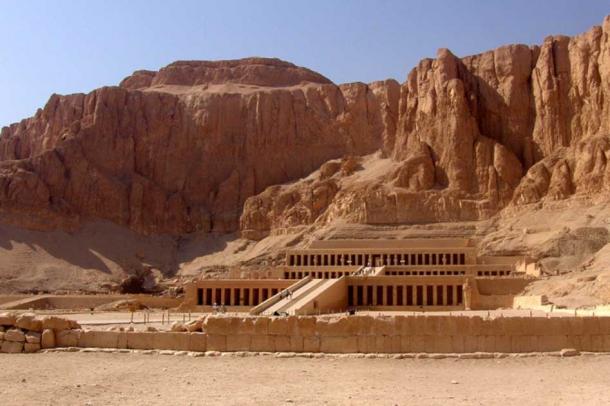
The mortuary temple of Hatshepsut in the ancient Egyptian city of Thebes is one of the great archaeological wonders of the world. (fotoeule / Adobe Stock)
1. Thebes
Thebes is one of the most well-known ancient Egyptian cities, as it was once a place of religious, cultural, and political significance. Known as the second capital of Egypt during the New Kingdom (1570 to 1069 BC), it was called the city of Amun, another creator god. Greek poet Homer once even referred to Thebes as the “city with a thousand gates” because of how many buildings it contained.
- A Dream Destination for Egyptologists: The Amazing Amarna Necropolis
- The Nile: How One River Helped Build a Civilization – 10 Amazing Facts
Located on the east bank of the Nile in what is now Luxor, ancient Thebes and the New Kingdom were known for the establishment of “pharaohs” including Ramesses II and King Tut. The city contained beautiful temples called the Abu Simbel temples, which were built by Ramesses II and were dedicated to Amun, Ra-Horakhty, and Ptah, god of the sun, god of the air, and god of creation respectively. These temples, now in ruins, can still be seen today.
In addition to the temples, the Valley of the Kings is also located in Thebes. The Valley of the Kings is the region of rock-cut tombs that contained the bodies of pharaohs and rulers such as Ramesses II, Hatshepsut, and King Tut. Because this region contains so many extraordinary archaeological findings, it was declared a world heritage site in 1979 by UNESCO in an effort to preserve it.
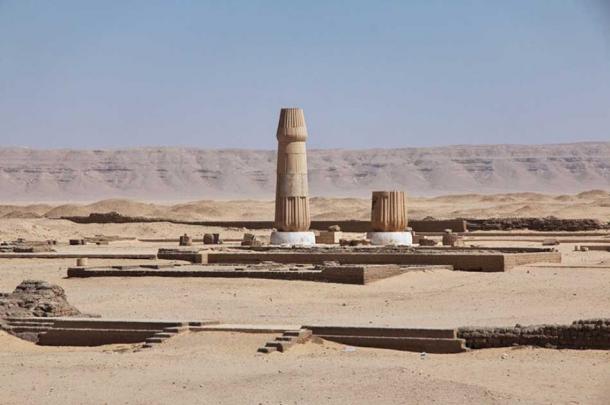
The remains of the Temple of Aten at Amarna. (Sergey / Adobe Stock)
2. Amarna
Amarna isn’t as popular as the other ancient Egyptian cities, but it was declared a capital between 1353 and 1336 BC by Pharaoh Akhenaten. Though it was not a capital very long, it was home to one of the greatest religious struggles in ancient Egyptian history. Akhenaten, who ruled for only 20 years, fought to push the belief of monotheism on the people of Amarna, a belief they rejected fervently. This belief was reversed with the rule of his son, Tutankhamen, who supported polytheism.
While Akhenaten was the ruler of Amarna, he built many parts of the city to honor and worship Aten, a god of the sun. Historians believe this was likely also an attempt to make Aten the official Egyptian god and to turn Egyptians away from polytheism. Though the city was soon abandoned, the site still has some existing tombs carved with inscriptions worshipping Aten.
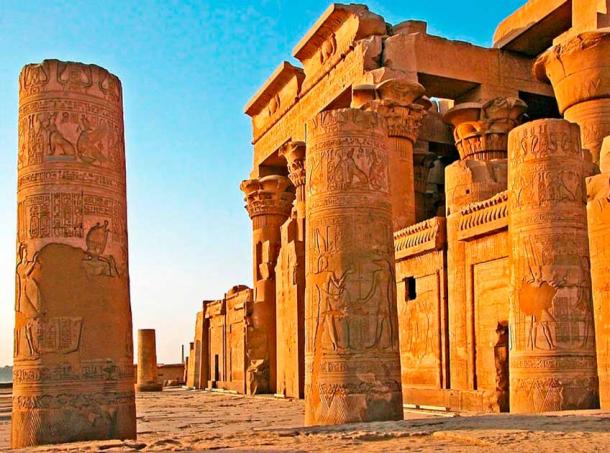
Kom Ombo Temple. (Dennis Jarvis / CC BY-SA 2.0 )
3. Nubt (Kom Ombo)
Nubt, now known as Kom Ombo, was an ancient Egyptian city known for its agriculture. It was also a trade city, which combined with its agriculture made it essential. In Nubt, the people mostly worshipped the god Sobek, who was known as the crocodile god. The term Nubt can be translated as “city of gold,” as ancient Nubt was known for its large gold deposits throughout the region.
Nowadays, the city is known for its Temple of Kom Ombo, which was built sometime between 180 and 47 BC. Nevertheless, the temple has been significantly damaged due to the Nile and natural disasters like earthquakes. There is also a crocodile museum that opened in 2012 dedicated to the many mummified crocodiles found within the city.
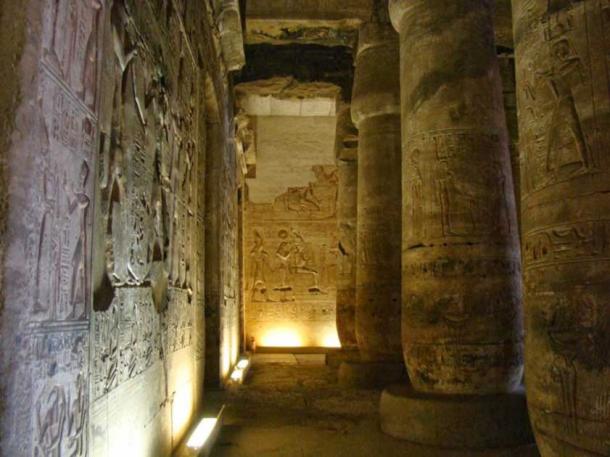
Interior of the Temple of Seti I at the ancient Egyptian city of Abydos. (Leon Petrosyan / CC BY-SA 4.0)
4. Abydos
Abydos is one of the oldest ancient Egyptian cities, stemming back all the way to the First Dynasty. It was known as an extremely holy place as it was believed Osiris, the god of fertility, the dead, resurrection, the afterlife, agriculture, life, and vegetation, was buried there. He is known as one of the most essential gods in Egyptian culture, marking this city as an essential landmark for those looking to worship him.
Several temples were built throughout Abydos in honor of Osiris, with some of these temples’ remains still existing in the city. Many of the ancient kings, queens, and pharaohs of the region were buried in and around Abydos due to its holiness. The Temple of Seti I is the most famous landmark in modern-day Abydos, as it is still standing and in generally good condition compared to other ancient buildings throughout Egypt (especially considering its age!).
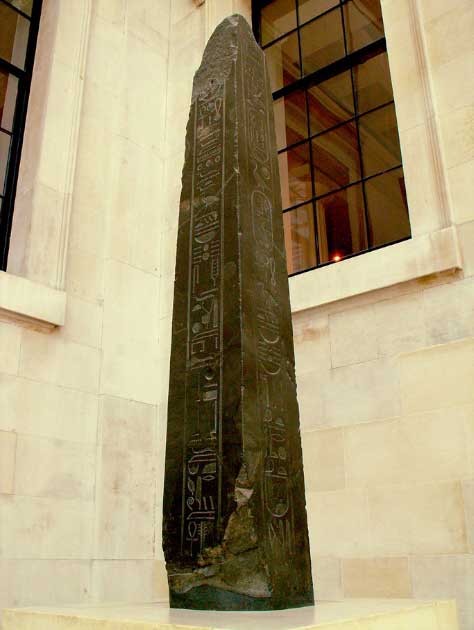
One of a pair of obelisks of Nactanebo II which were originally located at Hermopolis (modern-day Al-Ashmunayn) and are now on display at the British Museum in London. (Public domain)
5. Hermopolis
Hermopolis, also called Khumunu, was once one of the wealthiest cities in ancient Egypt. Located on the border between Upper and Lower Egypt, it was often seen as one of the largest religious centers connecting the two halves. Its history goes back to the Old Kingdom, but it existed for many years until it was abandoned in 642 AD after the Islamic conquest.
In Hermopolis, Thoth was the primary deity worshipped by ancient Egyptians. Thoth was known as the god of healing, magic, and wisdom, and there were many priests and priestesses in the city that worshipped him. It was also believed that the first sunrise occurred in Hermopolis, making it the sun’s “birthing place.”
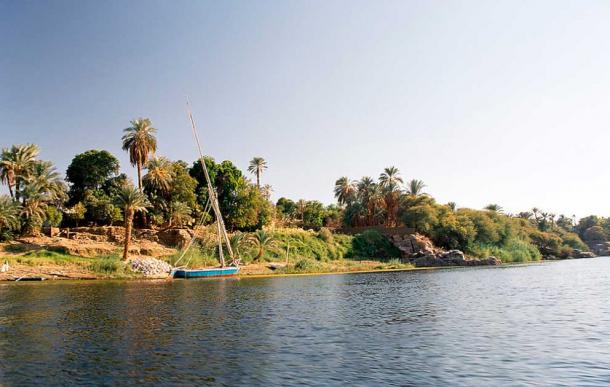
Elephantine was a defense city on an island in the middle of the Nile. (Przemyslaw "Blueshade" Idzkiewicz / CC BY-SA 2.0)
6. Elephantine
Elephantine was an essential defense city for ancient Egypt. Translated into “country of elephants,” Elephantine was located on the border between Egypt and Nubia, and was known as a trading site and a site of defense against Nubia. An island in the middle of the Nile, Elephantine was most often associated with water gods and flooding, especially Khnum.
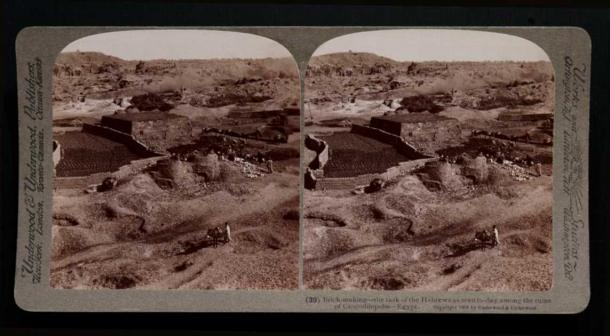
The ruins of Crocodilopolis in 1904. (Underwood & Underwood / CC BY-SA 2.5)
7. Crocodilopolis
Crocodilopolis, much like Nubt, worshipped the god Sobek. Sobek, as we previously mentioned, was the god of crocodiles, giving Crocodilopolis its name. Like Abydos, it was also one of the oldest ancient Egyptian cities, with its history being traced all the way back to around 4000 BC. Located at the modern-day city of Faiyum in Middle Egypt, in one of the most fertile regions in Egypt, Crocodilopolis was known for its agriculture, in which it grew plants such as corn, flowers, and olives. This fertility led many Egyptians to turn to worship Sobek in return for plenteous rewards.
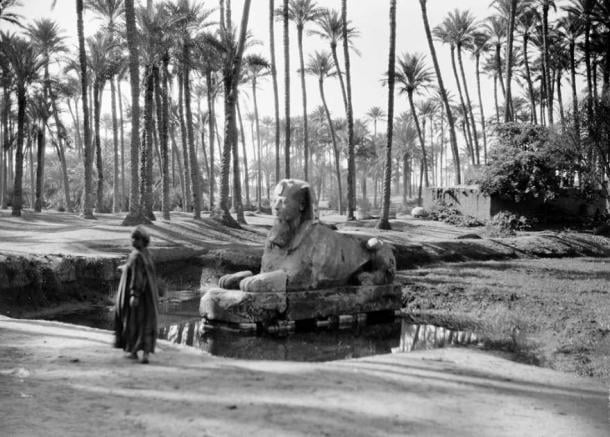
Alabaster Sphinx at the Temple of Ptah around 1929. (Public domain)
8. Memphis
The ancient city of Memphis is historically known as Egypt’s first official capital. It was the capital between 2950 BC and 2180 BC and was known as one of the primary centers of worship in Egypt at the time. The gods Ptah (the creator), Sekhmet (his wife), and Nefertem (his son) were worshipped heavily there. Some historians even estimate that at this time, Memphis was the largest city in the world.
Located about 15 miles (24 km) south of Cairo, the ancient capital started to decline around the 15 th to the 11th century BC. It was made a second capital (with Thebes becoming the primary capital) until eventually becoming fully abandoned with the rise of Alexandria in 332 BC. Today, it is mostly destroyed except for the remaining ruins of an alabaster Sphinx and a statue of Ramesses II.
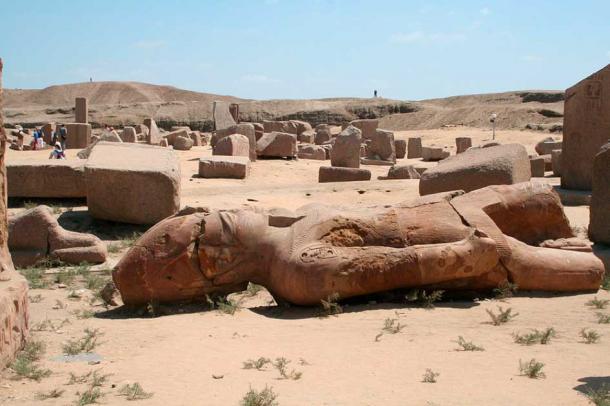
The ruins of the ancient Egyptian city of Djanet, also known as Tanis. (Einsamer Schütze / CC BY-SA 3.0)
9. Djanet
Djanet, also known as Tanis, was a city located in Lower Egypt during the late New Kingdom. Though it is not as old as the other ancient Egyptian cities, it was still a major part of the 21st and 22nd Dynasties of Egypt. It served as the royal home for these dynasties at this time and had major construction done in honor of the god Amun (then called Amun-Ra), god of the sun and air.
Djanet was eventually abandoned during Rome’s reign over Egypt, but archaeological work in the late 1800s revealed many artifacts from the ancient city. These artifacts, which included ancient artworks, gave historians greater insight into the city than they had previously.
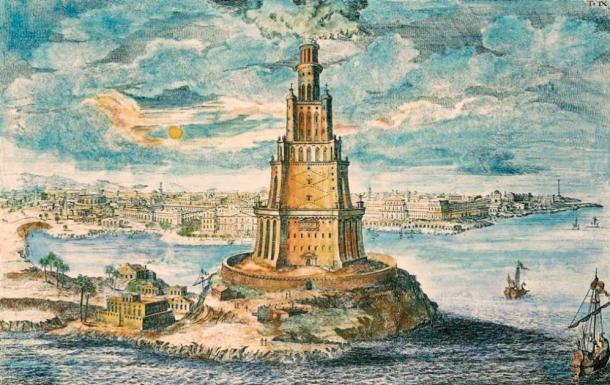
Engraving of the Pharos of Alexandria by Johann Bernhard Fischer von Erlach. (Public domain)
10. Alexandria
Alexandria is arguably the most well-known city in Egypt. It was the capital of Egypt between 332 BC and 641 AD after Alexander the Great conquered Egypt. Alexander the Great’s generals established the Ptolemy Dynasty, which soon made Alexandria the intellectual center of the world.
Alexandria also became known for the world’s largest library (the Library of Alexandria, later burned by Julius Caesar) and the Lighthouse of Alexandria, which was one of the Seven Wonders of the Ancient World. The lighthouse was the tallest man-made structure of its time, but it was unfortunately destroyed by a series of earthquakes between the 10th and 14th centuries AD.
Alexandria was known as a city of progression and technological innovation. The Lighthouse of Alexandria was originally built as an initiative to foster a conducive environment for trade and other business in the city. Now, it is still the 2nd largest city in Egypt and is known for the catacombs of Kom El Shoqafa, one of the largest and most important burial sites in Egypt.
Egypt vs. Time
Though these ancient Egyptian cities are fascinating to learn about, Egypt today is quite different from its historic self. While ancient Egypt was self-sufficient, modern-day Egypt now imports many of its goods from across the world thanks to advancements in international travel. Notwithstanding, they still rely heavily on their agriculture and other local businesses.
- Egyptian Alexandria - Ancient Underwater Finds Revealed the Pharaonic Roots of the Ptolemaic City
- 10 Must See Ancient Cities to Add to Your Bucket List
Modern Egyptian culture is also different. While in ancient Egypt most Egyptians were polytheistic and worshipped many gods (such as Amun, Ptah, and Sobek), most Egyptians today are monotheistic and follow a structured religion like Christianity or Islam. They also speak Egyptian Arabic as opposed to any of the now-dead ancient Egyptian languages.
However, some things have remained the same. Some ancient foods have been passed down and are still made at special events, like ancient Egyptian cookies during Eid. Their modern language also still uses some of the words used in the past, even if the full language itself is no longer spoken. Finally, they still enjoy Egyptian goods such as gold and jewelry, which are especially loved by Egyptian women. The next time you visit Egypt, consider visiting some of these amazing ancient Egyptian cities in order to learn something new from the past.
Top image: Karnak temple in the ancient Egyptian city of Thebes. Source: Calin Stan / Adobe Stock
By Lex Leigh
References
El-Aref, N. 1 February 2012. “Crocodile Museum opens in Aswan” in Ahram Online. Available at: https://english.ahram.org.eg/NewsContent/9/44/33460/Heritage/Museums/Crocodile-Museum-opens-in-Aswan.aspx
ETP Team. 18 October 2020. “Ancient Egyptian cities” in Egypt Tours Portal. Available at: https://www.egypttoursportal.com/egypt-civilization/ancient-egyptian-cities/#section7
Mark, J. J. 07 October 2016. “New Kingdom of Egypt” in World History Encyclopedia. Available at: https://www.worldhistory.org/New_Kingdom_of_Egypt/
No name. No date. “The Temple of Seti I in Abydos” in ARCE. Available at: https://www.arce.org/temple-seti-i-abydos
No name. No date. “Ancient Egypt Cities” in Ducksters. Available at: https://www.ducksters.com/history/ancient_egypt/cities_of_ancient_egypt.php
No name. No date. “The catacombs of Kom el-Shuqafa: Alexandria” in Memphis Tours. Available at: https://www.memphistours.com/Egypt/Egypt-Wikis/Alexandria-Attractions/wiki/Catacomb
Shahinda. 8 February 2022. “What is the difference between modern and Ancient Egypt?” in Studio Arabiya in Egypt. Available at: https://www.studioarabiyainegypt.com/what-is-the-difference-between-modern-and-ancient-egypt/
World History Edu. 21 August 2021. “12 greatest ancient Egyptian cities” in World History Edu. Available at: https://www.worldhistoryedu.com/greatest-cities-in-ancient-egypt/


















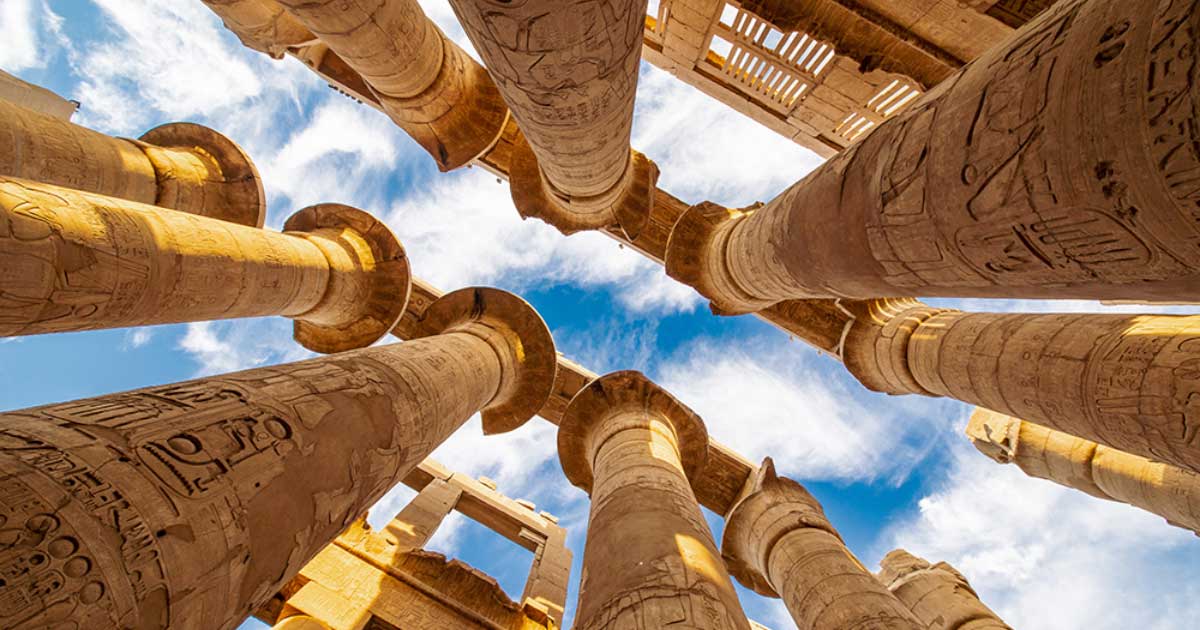

Comments
Elephantine and Crocodilopolis sound like such made up names. I'm aware man had to invent the names thus making them "made up" but I would think they were pretend words had I not known better. While I appreciate the mention of Hatshepsut in the Valley of the Kings, it would have been nice to include her in important rulers in Thebes. Her architectural contributions alone warrent her a mention.